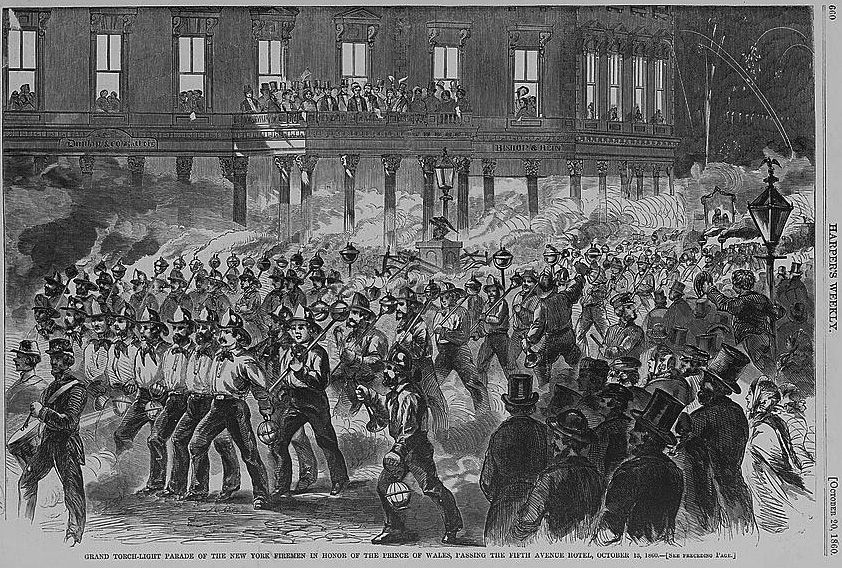
Firefighting Antiques and Memorabilia
In 2006, we had an interesting example of antique firefighting memorabilia—an 1866 sterling silver presentation fire trumpet or fire horn with an engraved inscription from the Saratoga Springs Fire Department. The common examples of fire trumpets were used to warn oncoming traffic out of the path of the fire engines. Sterling silver and silver plated versions of the horns would sometimes be presented in recognition to retiring fire chiefs, head engineers and the like. This is an attractive example of a presentation horn, with a practical, functional form enhanced only by the ornate engraved inscription. Some examples of presentation horns were more ornate, with repousse or raised decorative elements.
The recorded history of organized firefighting dates back to the days of the Romans, but modern firefighting can be traced to the Great Fire of London in 1666. After the fire devastated two square miles of the city, leaving tens of thousands of citizens homeless, private fire brigades were formed by insurance companies. Originally, these privately run brigades would extinguish fires only at buildings covered by the insurance companies. Fire insurance plaques, also called fire insurance marks, were posted outside the buildings to guide the brigades. By the 18th century, the insurance brigades united under a single entity, the London Fire Engine Establishment. American fire insurance companies operated in a generally similar manner, though entirely by volunteer basis until 1850; in the late 19th century, the competing American volunteer fire companies were notorious for breaking into fights over who would have the right to fight the fire and receive compensation from the insurance company covering the property.
The original English and American fire insurance marks were crafted in cast iron, tinplate, copper or lead, and can be very collectible. While some are utilitarian in design (with only the name of the insurance company on display), some fire insurance marks are quite decorative. Sometimes these can still be seen on historic buildings today in cities like London, Edinburgh, Philadelphia and New York City.
The different types of firefighting equipment used in the 18th and 19th centuries have an interest and a collectible appeal of their own. Pictured below is a parade torch (mounted on a wall plaque), which was carried by firemen before the days of electric lights. When fighting a fire at night, the long handled torch allowed a man to hold the lamp aloft if another firefighter needed to use his axe or other equipment. The oil lamp itself is suspended from a frame, which also allows the light to tilt and be held at any angle.
The torch was a recognizable symbol of the 19th century firefighters. Below is an engraving from the October 1860 edition of Harper’s Weekly, titled “Grand torch-light parade of the New York firemen in honor of the Prince of Wales, passing the Fifth Avenue Hotel.” In the print, you can see the rows of marching firemen carrying their torches, while in the foreground another fireman carries a fire trumpet.




